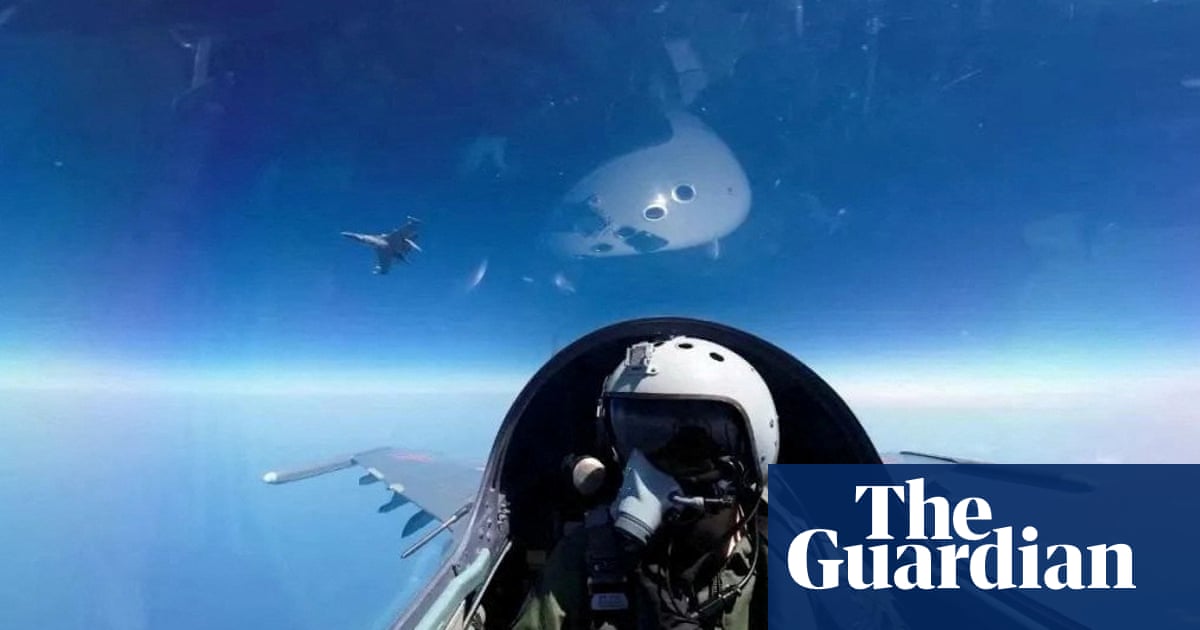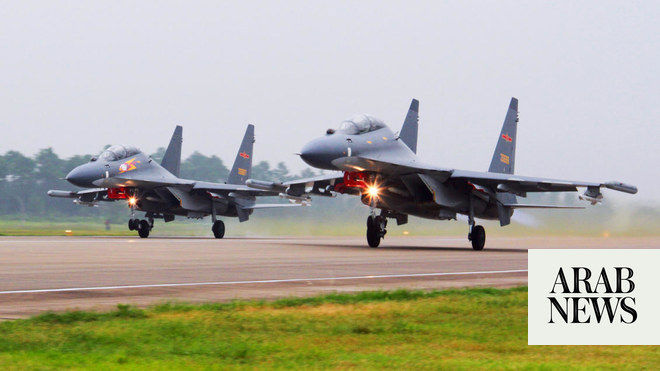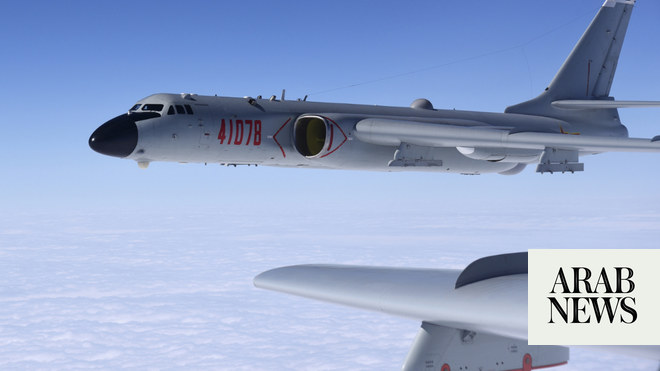
China sent dozens of warplanes towards Taiwan for a second day of military drills on Sunday, launching simulated attacks in retaliation to the island’s president, Tsai Ing-wen, meeting the US House speaker during a brief visit to the US.
Taiwan’s defence ministry said it was monitoring the movements of China’s missile forces, as the US said it too was on alert.
China’s People’s Liberation Army (PLA) sent 70 warplanes, including fighter jets, reconnaissance craft and refuellers, into Taiwan’s air defence identification zone (ADIZ) on Sunday morning, according to Taiwan’s defence ministry. It did not provide a map or locations, but said 31 planes had crossed the median line – the de facto border in the Taiwan strait between Taiwan and China.
The PLA had announced the immediate start to three days of drills on Saturday morning. By 7pm that evening it had sent 71 warplanes and eight ships into Taiwan’s ADIZ with almost 60 crossing the median line.
Taiwan’s ministry said the activity had severely violated Indo-Pacific peace and stability, and had a negative effect on international security and economies. It urged other countries to speak out against China’s actions.
Chinese state television reported that multiple units carried out simulated strikes on key targets in Taiwan and the surrounding sea. The Chinese military’s eastern theatre command put out a short animation of the simulated attacks on its WeChat account, showing missiles fired from land, sea and air into Taiwan with two of them exploding in flames as they hit their targets.
A Taiwan security source told Reuters that on Saturday the Chinese drills around the Bashi channel, which separates Taiwan from the Philippines, included simulated attacks on aircraft carrier groups as well as anti-submarine drills.
Last August, after a visit to Taipei by then US House speaker Nancy Pelosi, China staged war games around Taiwan including firing missiles into waters close to the island, though it has yet to announce similar drills this time.
Chinese maritime authorities have issued just one notice of a live fire zone, in a small area of water near Pingtan, in the Taiwan strait. The mandatory notice warns air and seacraft to keep clear of the area, which is just a fraction of the areas designated for live fire during last year’s drills.
While in Los Angeles last week, on what was officially billed a transit on her way back from Central America, Tsai met the speaker of the US House of Representatives, Kevin McCarthy, despite Beijing’s warnings against the meeting.
The de facto US embassy in Taiwan said on Sunday that the US was monitoring China’s drills around Taiwan closely and is “comfortable and confident” it has sufficient resources and capabilities regionally to ensure peace and stability.
US channels of communication with China remain open and the US had consistently urged restraint and no change to the status quo, said a spokesperson for the American Institute in Taiwan, which serves as an embassy in the absence of formal diplomatic ties.
Washington severed diplomatic relations with Taipei in favour of Beijing in 1979 but is bound by law to provide the island with the means to defend itself.
China, which has never renounced the use of force to bring the island under its control, says Taiwan is the most important and sensitive issue in its relations with the US, and the topic is a frequent source of tensions.
Beijing considers Tsai a separatist and has rebuffed her repeated calls for talks. Tsai says only Taiwan’s people can decide their future.
China has over the past three years or so stepped up its military pressure against Taiwan, flying regular missions around Taiwan, though not in its territorial airspace or over the island itself.
Chinese state media said the aircraft flown into the ADIZ this weekend were armed with live weapons.
Taiwanese air force jets also typically carry live weapons when they scramble to see off Chinese incursions.
Late on Saturday, Taiwan’s Ocean Affairs Council, which runs the coast guard, put out footage on its YouTube channel showing one of its ships shadowing a Chinese warship, though it did not give an exact location.
“You are seriously harming regional peace, stability and security. Please immediately turn around and leave. If you continue to proceed we will take expulsion measures,” a coast guard officer says by radio to the Chinese ship.
Other footage showed a Taiwanese warship, the Di Hua, accompanying the coast guard ship in what the coast guard officer calls a “standoff” with the Chinese warship.
Still, civilian flights around Taiwan, including to Kinmen and Matsu, two groups of Taiwan-controlled islands right next to the Chinese coast, have continued as normal.
In August, civilian air traffic was disrupted after China announced effective no-fly zones in several areas close to Taiwan where it was firing missiles.
Meanwhile the French president, Emmanuel Macron, said in an interview published on Sunday that Europe must not be a “follower” of either the US or China on Taiwan, saying that the bloc risks entanglement in “crises that aren’t ours”.
His comments risk riling Washington and highlight divisions in the European Union over how to approach China, as the US steps up confrontation with its closest rival and Beijing draws closer to Russia in the wake of its invasion of Ukraine.
“The worst thing would be to think that we Europeans must be followers and adapt ourselves to the American rhythm and a Chinese overreaction,” Macron told media as he returned on Friday from a three-day state visit to Beijing.












